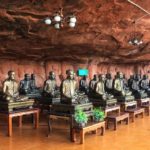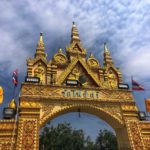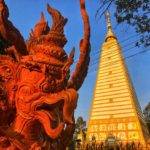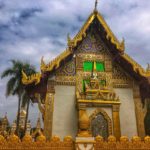Metal Bodh Gaya Chedi in Thailand w/ Baby Buddha Statue
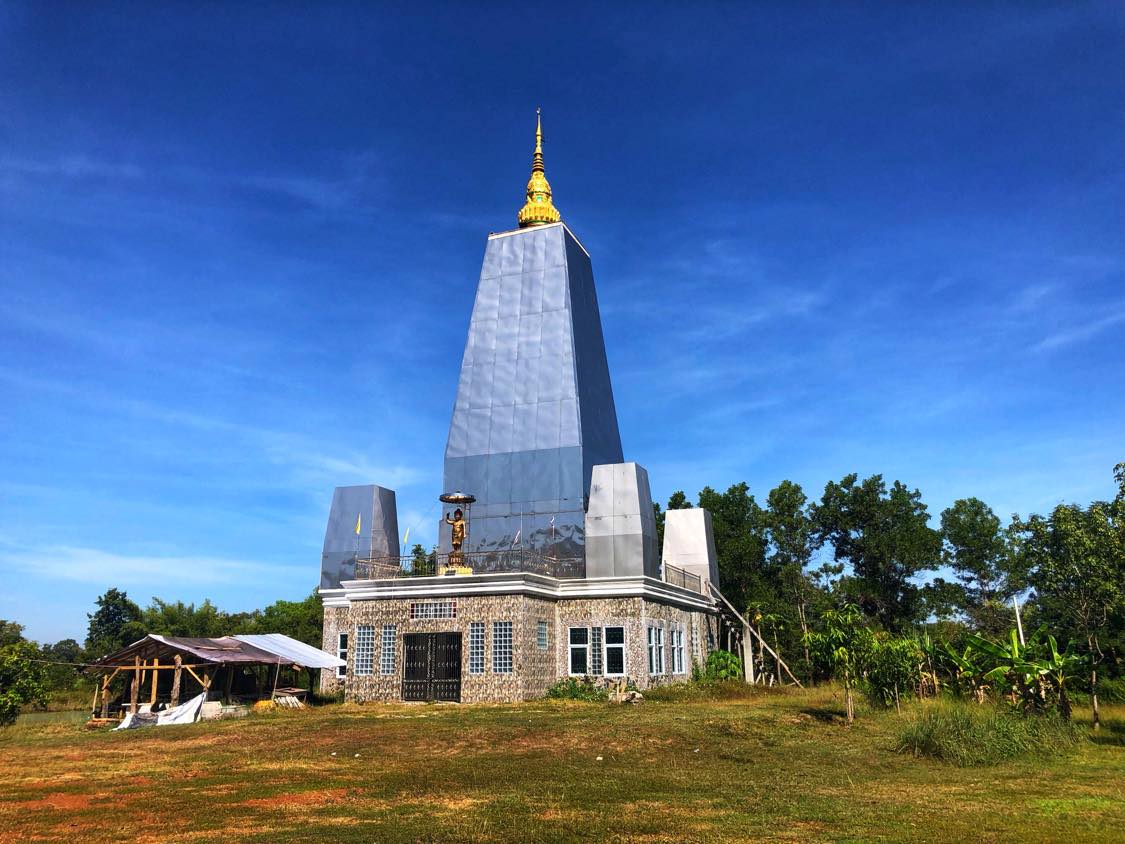
Thailand is a Kingdom of Temples. It also is filled with sacred chedis (stupas), especially in the Northeastern province of Sakon Nakhon. Many chedis in Thailand are inspired by the famous Buddhist chedis of India. For example, Phra Chedi Sadaeng Pathom Thesana (พระเจดีย์แสดงปฐมเทศนา) is a replica of the Dhamek Stupa located in Varanasi, India, which marks the place where the Buddha delivered his first sermon. Meanwhile, Phra Chedi Si Maha Pho (พระเจดีย์ศรีมหาโพธิ์) is an orange replica of the Mahabodhi Temple in Bodh Gaya, India, where the Buddha achieved enlightenment under the Bodhi tree.
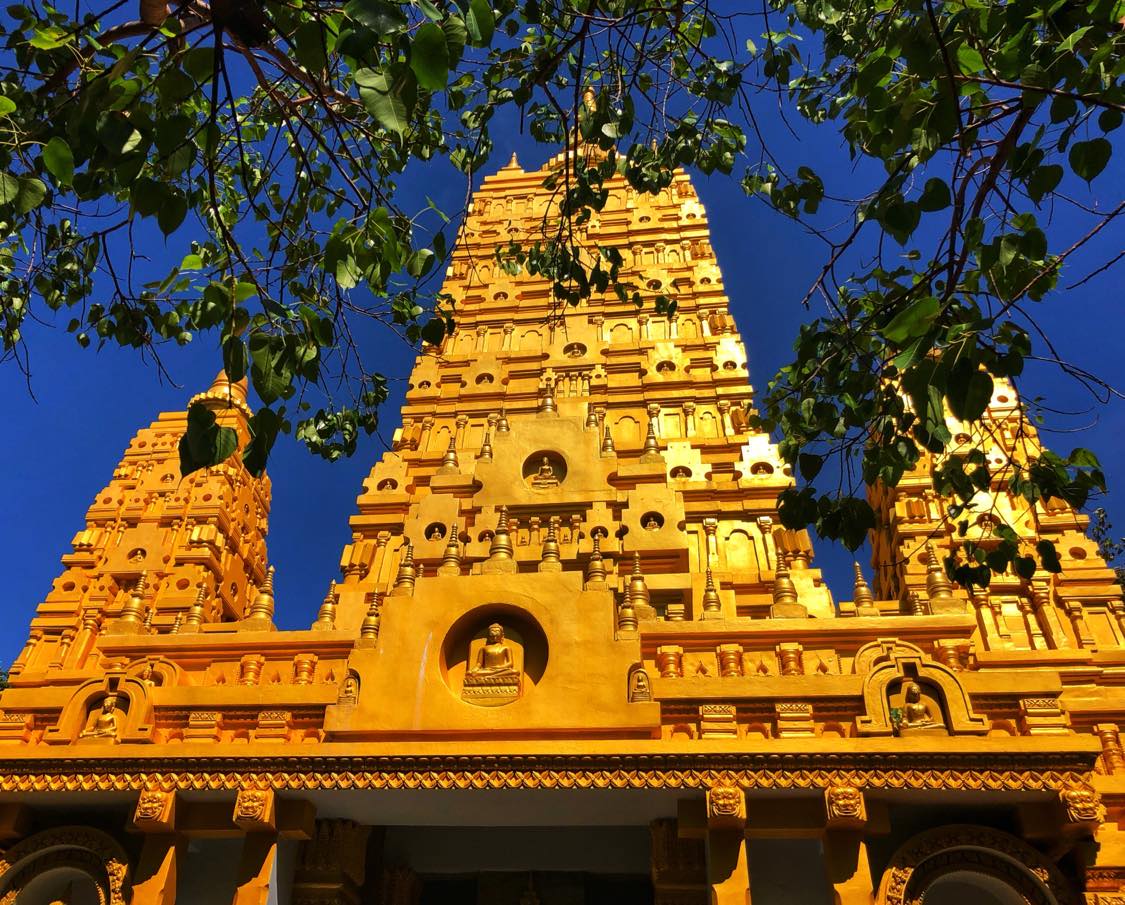
Thailand doesn’t simply replicate the famous chedis of India. The Kingdom sometimes honors a famous Indian chedi by building a variation of it in a new architectural style. One such chedi we recently discovered unexpectedly (as it wasn’t listed on Google Maps) while traveling the back roads of Sakon Nakhon’s Phanna Nikhom District.
Across from the Sao Khwan Nun Dharma Practice Center (สำนักปฏิบัติธรรมแม่ชีเสาขวัญ) is a newly built metallic chedi. It has been fashioned in minimalist style with panels of sheet metal that shine with the morning sunrise and at night with solar powered lights.
The tall, metallic tower is called the Phutthakhaya Maha Mongkol Chedi (เจดีย์พุทธคยามหามงคล), which translates to the Great Auspicious Bodh Gaya Chedi. Like Phra Chedi Si Maha Pho, this chedi takes its inspiration from the Mahabodhi Temple, which features a Hindu/Jain style tower that originally was made of carved stone, and later renovated with brick covered with stucco.
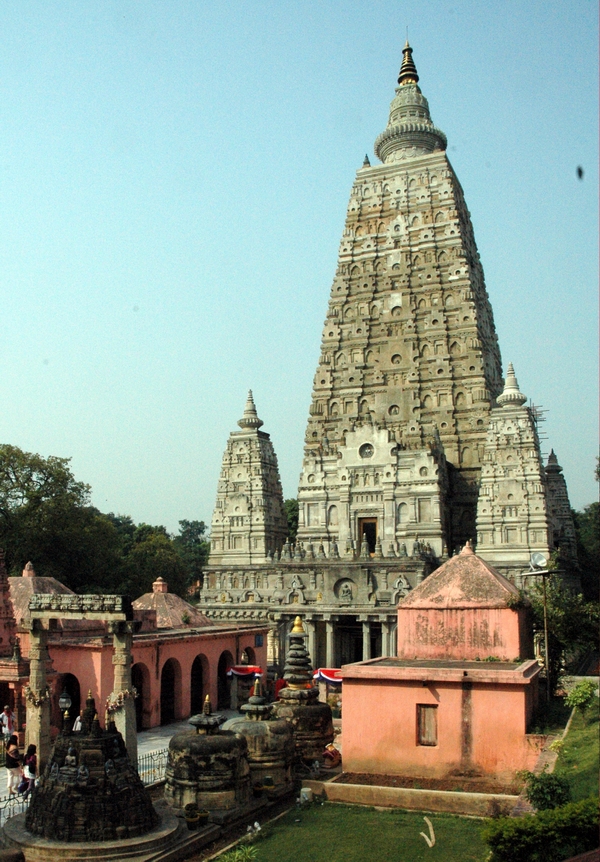
The minimalist Phutthakhaya Maha Mongkol Chedi sits atop a ground floor building and is crowned by a gold spire. The metal tower is surrounded by a balcony with a metal pillar in each corner (reminiscent of the Mahabodhi Temple) and a gold statue of the baby Buddha pointing upward (a unique addition). This religious event is known as the “Seven Steps of the Buddha” or the “Seven Steps of Prince Siddhartha.”
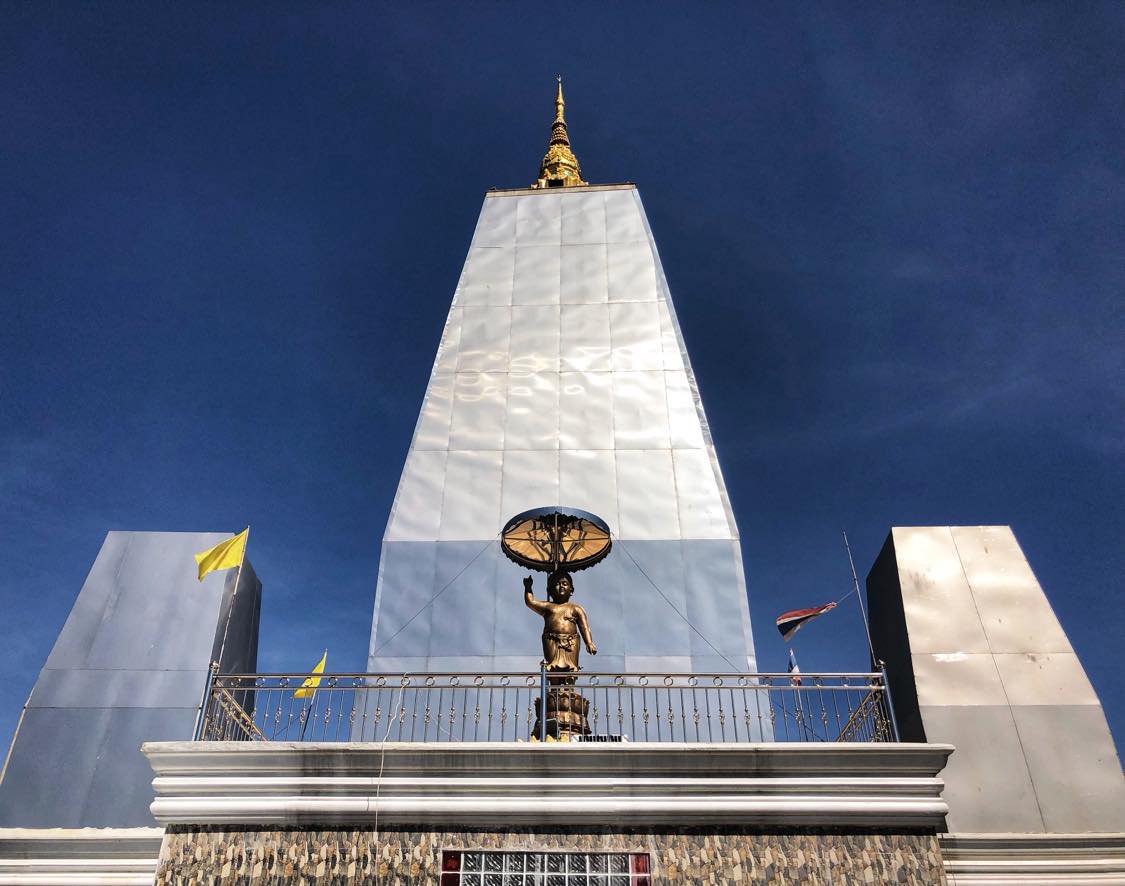
According to Buddhist tradition, when Siddhartha Gautama was born, he took seven steps immediately after birth. With each step, a lotus flower appeared on the ground, and he declared:
“I am chief of the world,
Eldest am I in the world,
Foremost am I in the world.
This is the last birth.
There is now no more coming to be.”
During these seven steps, it is said that the infant Buddha pointed one hand towards the sky and the other towards the Earth, symbolizing his unique status as a being who had come from the heavenly realms to bring enlightenment to the world. This event is significant in Buddhist iconography in Thailand, although the baby Buddha appears less often at Thai temples versus other statues of the Buddha.
The seven steps are often interpreted as symbolizing the Seven Factors of Enlightenment in Buddhism: mindfulness, investigation, energy, joy, tranquility, concentration, and equanimity. The raised hand pointing to the sky is a gesture known as the “abhaya mudra,” which signifies fearlessness and protection. It conveys the idea that the Buddha, even as an infant, transcended the ordinary cycles of birth and death and possessed wisdom that lead to liberation from suffering.
Since the Phutthakhaya Maha Mongkol Chedi was built to honor Bodh Gaya (India), the place where the Buddha achieved enlightenment, it seems that the Thai designer of the metallic chedi placed the baby Buddha statue on the balcony to honor the fulfillment of the divine prophecy made by the infant Buddha.
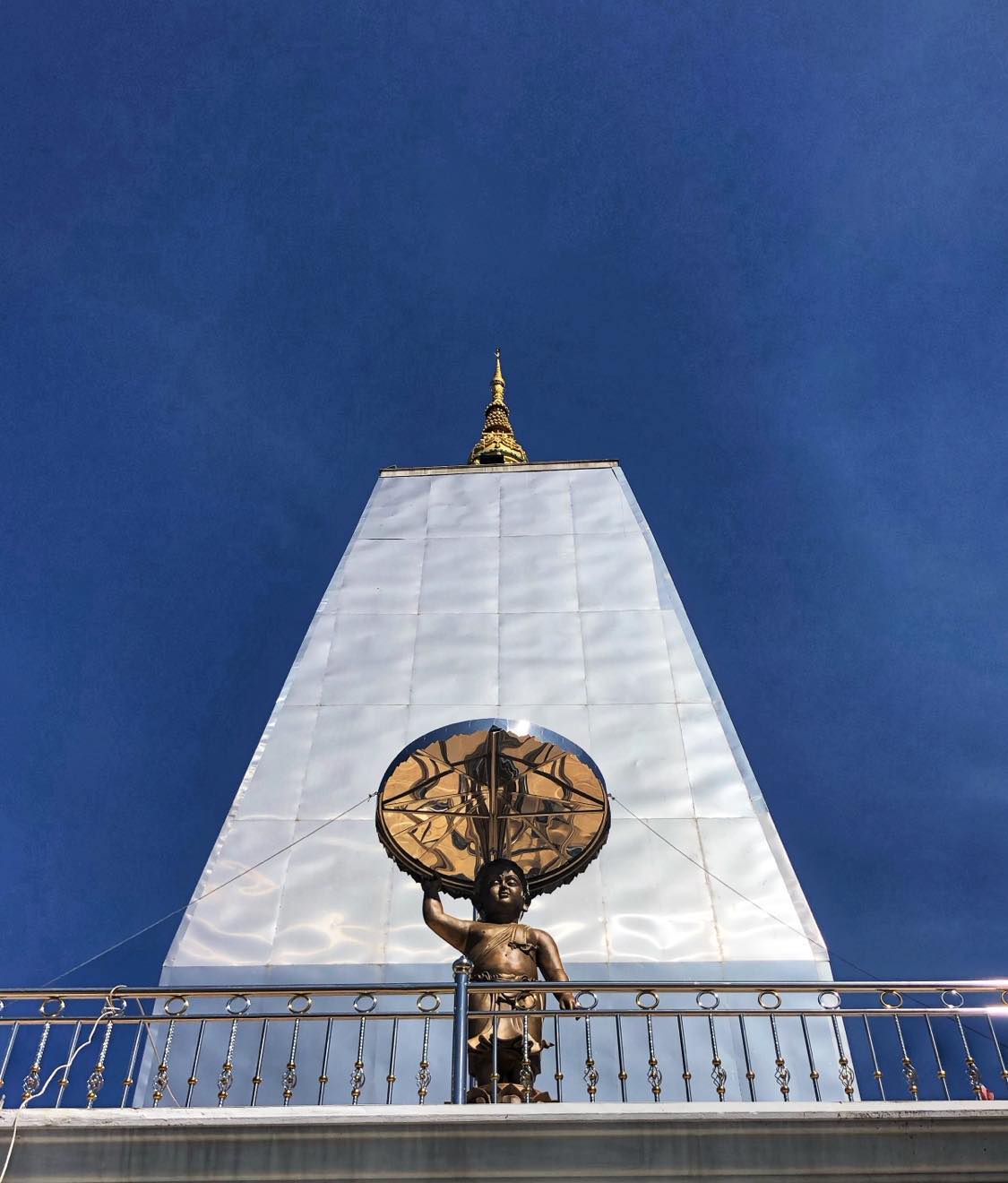
The Phutthakhaya Maha Mongkol Chedi (เจดีย์พุทธคยามหามงคล) is located about 40 minutes northwest of Sakon Nakhon city. Other nearby temples worth visiting are Wat Thep Sawat, with its Mae Takhian shrine, and Wat Pa Don Pradu Mongkhon Thip, with its dazzling mirror-tiled Viharn.
- Affirmations in Buddhism & Thailand - June 7, 2025
- Speak Thai Naturally Without the Gymnastics - April 20, 2025
- The Best Learn Thai Podcast and YouTube Channel - April 10, 2025

